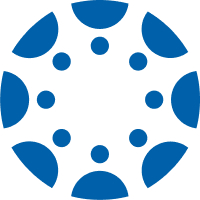Visual Basic Series B8576
Visual Basic is the most widely used programming language for creating Windows applications because it's easy to learn, and this series will teach you the skills you need to get started. You will learn the building blocks of programming in Visual Basic and event-driven and object-oriented programming concepts that are important in other programming languages. By the end of the series, you will have the tools you need to create sophisticated and powerful programs that business users need. This is a bundle of the following two classes.
Introduction to Visual Basic
Visual Basic is the most widely used programming language for creating Windows applications. Why? Because it's easy to learn, and doesn't require you to memorize difficult commands like other programming languages. In this course, you'll learn how to write Windows applications and programs using the Visual Basic programming language and the Visual Basic development environment.
Creating a Windows application ordinarily requires you to write lengthy and complex code. But, as you'll see, the Visual Basic development environment relieves you of this task. Instead, it enables you to create the application program and its components literally with the click of a button or menu item. It even writes all of the necessary code to get the application started for you, which you can then view and fine-tune.
Over the course of 12 lessons, you'll learn the building blocks of programming, including using variables to store data, control structures, and loops. You'll find out how to use the large function library built into Visual Basic, including the .NET Framework, as well as how to write and use your own functions. You'll also see how to use Windows' large and varied library of controls and how to access files and handle errors. Finally, since Windows applications are event-driven and everything in Visual Basic is treated as a programmable object, you'll learn about event-driven and object-oriented programming—concepts that are important not just in Visual Basic, but in other programming languages as well.
Intermediate Visual Basic
Why is Visual Basic the most widely used programming language for creating Windows applications? Because it's easier to learn and faster to use than most other programming languages.
If you're a VB programmer who wants to go beyond the introductory level to create the sophisticated and powerful programs business users need, this course is for you. As we focus on database applications, you'll learn the in-demand programming skills you need to get new work in the business world.
We'll begin by discussing how to enrich the graphical user interface with custom menus and toolbars. Next, we'll explore multiple form applications, starting with built-in dialog controls, and then turning to helper forms and Multiple Document Interface applications.
After that, we'll deepen your understanding of databases. You'll find out how to access and modify data with data-bound controls, ADO .NET, and Structured Query Language (SQL). And we'll finish up with a survey of other areas you might be interested in studying, including information on additional SQL functionality, Web applications, and XML.



 BACK TO PROGRAMS
BACK TO PROGRAMS